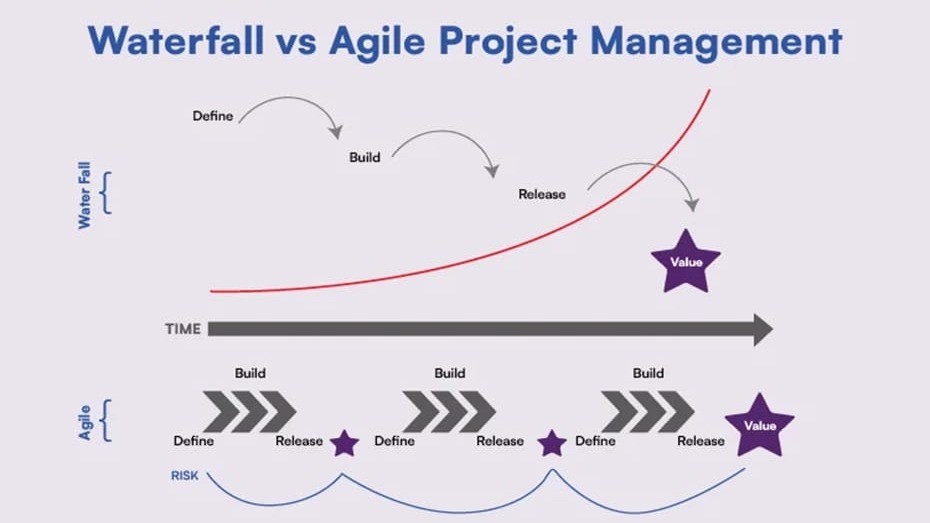When it comes to software development, choosing the right methodology can significantly impact the success of your project. Agile and Waterfall are two of the most widely used methodologies, each with its unique strengths and challenges. Understanding their differences can help you determine the best fit for your project.
What is Agile?
Agile is an iterative and flexible approach to software development. It emphasizes collaboration, customer feedback, and small, incremental improvements. Agile is best suited for projects that require adaptability and frequent updates.
Key Features of Agile:
- Iterative development with sprints or cycles.
- Collaboration between cross-functional teams.
- Continuous integration, testing, and deployment.
- Prioritization of customer feedback and adaptability.
Advantages of Agile:
- Flexibility to adapt to changing requirements.
- Faster delivery of functional components.
- Enhanced collaboration and communication.
- Improved customer satisfaction due to regular feedback.
Challenges of Agile:
- Requires high involvement from stakeholders.
- Can be less predictable in terms of timeline and budget.
- Needs a skilled and cohesive team to execute effectively.
What is Waterfall?
Waterfall is a traditional, linear approach to software development. It follows a sequential process, where each phase must be completed before moving on to the next. Waterfall is ideal for projects with well-defined requirements.
Key Features of Waterfall:
- Linear and sequential progression through phases.
- Clearly defined goals and milestones.
- Detailed documentation at every stage.
- Minimal changes once the project is underway.
Advantages of Waterfall:
- Easy to understand and manage.
- Predictable timeline and budget.
- Comprehensive documentation ensures clarity.
- Best suited for projects with stable requirements.
Challenges of Waterfall:
- Difficult to accommodate changes once development begins.
- Limited customer feedback until the project is complete.
- Potential delays if issues arise late in the process.
Agile vs. Waterfall: A Side-by-Side Comparison
| Feature | Agile | Waterfall |
|---|---|---|
| Approach | Iterative and flexible | Linear and sequential |
| Flexibility | High | Low |
| Customer Involvement | Continuous throughout the project | Limited to initial and final phases |
| Documentation | Minimal, focuses on working software | Comprehensive at every stage |
| Delivery | Incremental, in smaller functional units | Delivered as a complete product |
| Best For | Projects with evolving requirements | Projects with clear, stable requirements |
How to Choose the Right Methodology
When deciding between Agile and Waterfall, consider the following factors:
- Project Requirements:
- Choose Agile if requirements are likely to change.
- Opt for Waterfall if requirements are clear and fixed.
- Team Expertise:
- Agile requires experienced teams familiar with iterative development.
- Waterfall can be implemented with teams of varying skill levels.
- Stakeholder Involvement:
- Agile is ideal if stakeholders can actively participate throughout the project.
- Waterfall is suitable for projects with limited stakeholder availability.
- Timeline and Budget:
- Use Waterfall for projects with strict deadlines and budgets.
- Agile is better for projects that prioritize flexibility over rigid constraints.
- Project Size and Complexity:
- Agile works well for large, complex, or innovative projects.
- Waterfall is more effective for smaller, straightforward projects.
Both Agile and Waterfall methodologies have their merits and challenges. The choice depends on your project’s specific needs, goals, and constraints. By understanding the strengths and weaknesses of each approach, you can make an informed decision that maximizes your project’s success.
At PoterbyTech, we tailor our development processes to align with your project’s requirements, ensuring the best outcomes. Whether you prefer Agile, Waterfall, or a hybrid approach, our team is equipped to deliver exceptional results.
Ready to start your next project? Contact us today to discuss the best methodology for your goals.




